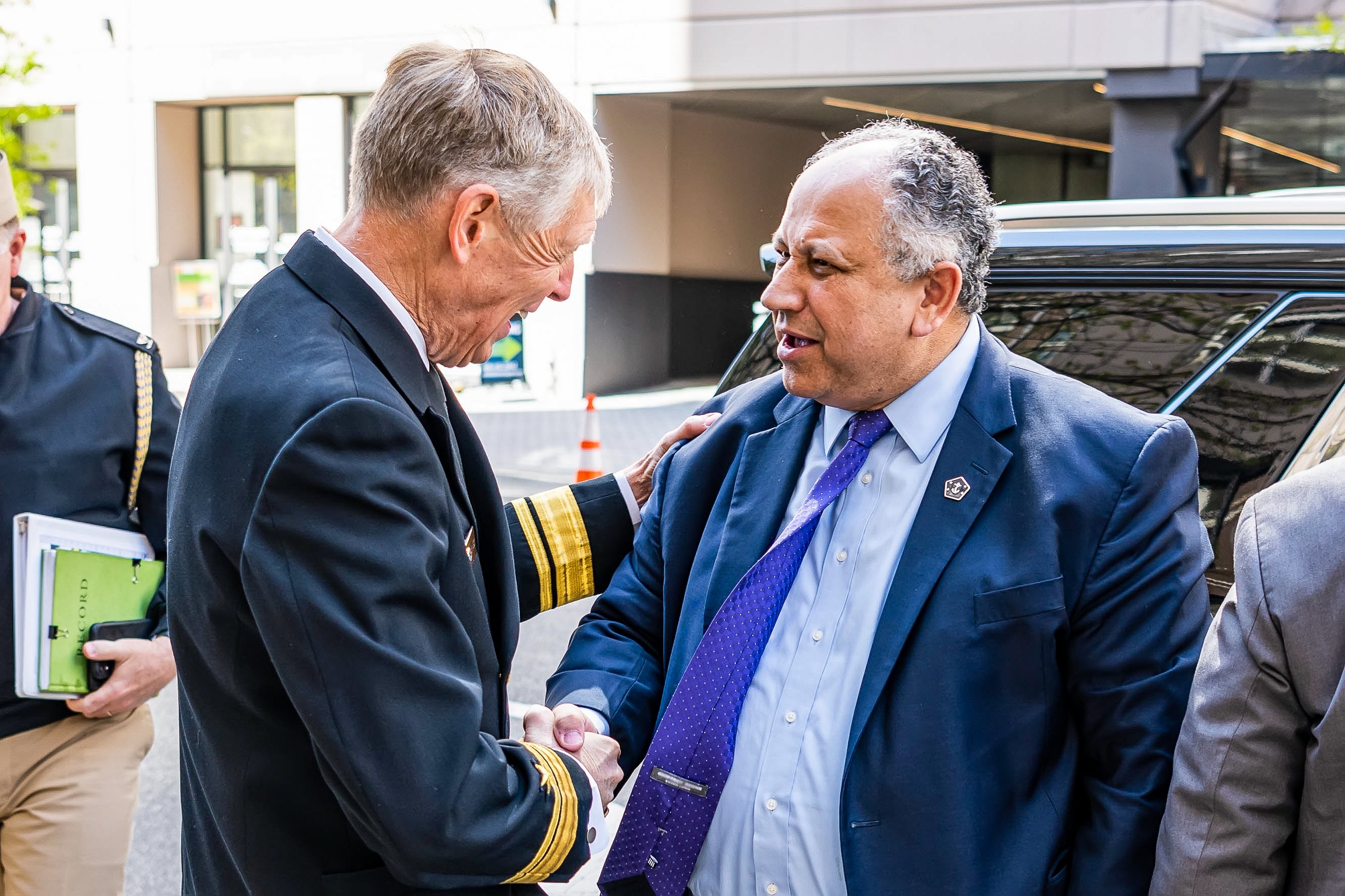ARLINGTON, Va. — The chief of naval research is pushing for the creation of an “experimentation czar” for the U.S. Navy and Marine Corps, a job meant to bring rapidly evolving technology to the fleet faster.
Rear Adm. Lorin Selby said the change would amount to an additional responsibility for him, or his successor, as director of the Office of Naval Research. The idea is to expand funding and authorities of the office to catapult promising technologies across the so-called “valley of death,” the time between development and actual procurement, he said.
The Marine Corps already has something similar in its Marine Corps Warfighting Lab, whose director also serves as the vice chief of naval research. MCWL maintains a matrix of training events big and small, all of which can be used to experiment with new gear or concepts. Lessons learned get rolled into later experimentation events and into rapid acquisitions efforts.
Selby told Defense News in an interview that that model could work for the whole naval force — he’d likely start with a more limited focus on U.S. 7th Fleet and III Marine Expeditionary Force in the Pacific, and he’d expand once the model proves useful — but it would take some fundamental changes to how money can be spent within the Department of Defense.
Selby said three things have to happen to bring disruptive technology into the fleet: ideation, incubation and scaling.
His office and other organizations receive a steady flow of good ideas from within the military and from partners in academia and industry. On incubation, he said the Navy is good at experimenting but doesn’t do it enough. “That’s a result of resources: it’s money and people,” he said, and the Navy needs to invest to create “a perpetual experimentation machine.”
Once a good idea is identified and matured, scaling it up is what trips up the Navy. If the service finds a cheap uncrewed system and wants to buy 100 or 1,000 of them to scatter around the fleet, for example, there’s no good way to make that happen quickly. The research community would have to find a program executive office to sponsor it, and the PEO would have to squeeze it into the budget planning process that may already be looking two fiscal years down the line. Then, once the money is available, the PEO would have to go through the acquisition process to award a contract, and the product may not finally deliver in numbers for three or four years.
“We’ve got to figure that piece out, which means … flexible funding,” Selby said.

Rather than require two organizations to be on the same page from opposite sides of the valley of death, Selby prefers to talk about a “bridge owner,” which would be the new experimentation czar.
“That person needs to have the contract shop, the finance shop, the legal shop, do all that stuff. And the good news is, I have all that. I just would need these additional authorities over additional monies” for the prototyping and procurement efforts, Selby argued. He added that the program offices already have the money; he’d just need to convince senior leadership to peel off a small portion of that money and give him control over it.
The rear admiral, who has led the Office of Naval Research since May 2020, said he’s having those conversations with top leaders now.
“Many of the senior folks I’ve talked to totally agree: yep, we need this experimentation machine. I’ve had some conversations with folks connected to the Hill who said, these are exactly the ideas we’re looking for,” he said. But the federal budget process doesn’t make flexible spending easy, requiring money in each “program element” line to be spent in just the right way.
A Commission on Planning, Programming, Budgeting and Execution Reform, which was mandated by the fiscal 2022 National Defense Authorization Act and formed earlier this year, may tackle the restrictive nature of today’s line-by-line budgeting and create some sort of flexible funding pot.
Once that flexible spending account is created, it will need money to fill it.
“That’s the challenge we have: No one really disagrees with the concept, other than where the bodies come from and how you pay for it.”
Selby said he’s currently talking to Navy leadership about how to find some money within the next one or two budget years, perhaps taking from other procurement programs that are facing delays and could have some dollars shaved off without further hurting them.

Ahead of getting the money side worked out, Selby is trying to demonstrate the process he would bring to this experimentation czar role.
To that end, the Office of Naval Research is running what the Navy has dubbed the “SCOUT” experimentation effort that. In this first iteration, the project focuses on solving operational problems for U.S. Southern Command in narcotics interdiction. Selby said the SCOUT team went to Joint Interagency Task Force South headquarters in Key West, Fla., to learn more about the specifics of their challenges — how to conduct wide-area search, how to incorporate P-8A Poseidon aircraft into their processes, how to aggregate data. The team came back with four specific problems to tackle.
Through a commercial solutions opening, more than 80 companies applied to participate in this SCOUT effort. Selby said ONR whittled through them and would put together a final set of potential solutions to demonstrate in the Southern Command area in February or March.
He noted SCOUT is relying on a “pick-up team” of staff from ONR and warfare centers, and he said “that needs to be a permanent team” if the model were to be scaled up for a Navy-wide experimentation czar.
Selby said he feels strongly about creating a “perpetual experimentation machine” so the Navy can develop a strategic hedge: though the service needs to continue research and development in support of modernizing current ships, aircraft and weapons, the Navy also needs to seek disruptive technologies that would give it an entirely different way to fight a fight. He recalled the Navy’s development of naval aviation and aircraft carriers in the 1920s, even despite fielding a fleet centered around battleships. When the Japanese neutralized the U.S. battleship fleet, the U.S. Navy was able to succeed in the war because it had naval aviation technology and concepts ready to quickly employ.
“I’m very clear: I’m not trying to replace the big complex things because we still need them,” he said. “I’m just concerned that, somewhere along the way here, somebody is going to figure out how to counter that — and I want to have a backup plan.”
Megan Eckstein is the naval warfare reporter at Defense News. She has covered military news since 2009, with a focus on U.S. Navy and Marine Corps operations, acquisition programs and budgets. She has reported from four geographic fleets and is happiest when she’s filing stories from a ship. Megan is a University of Maryland alumna.





